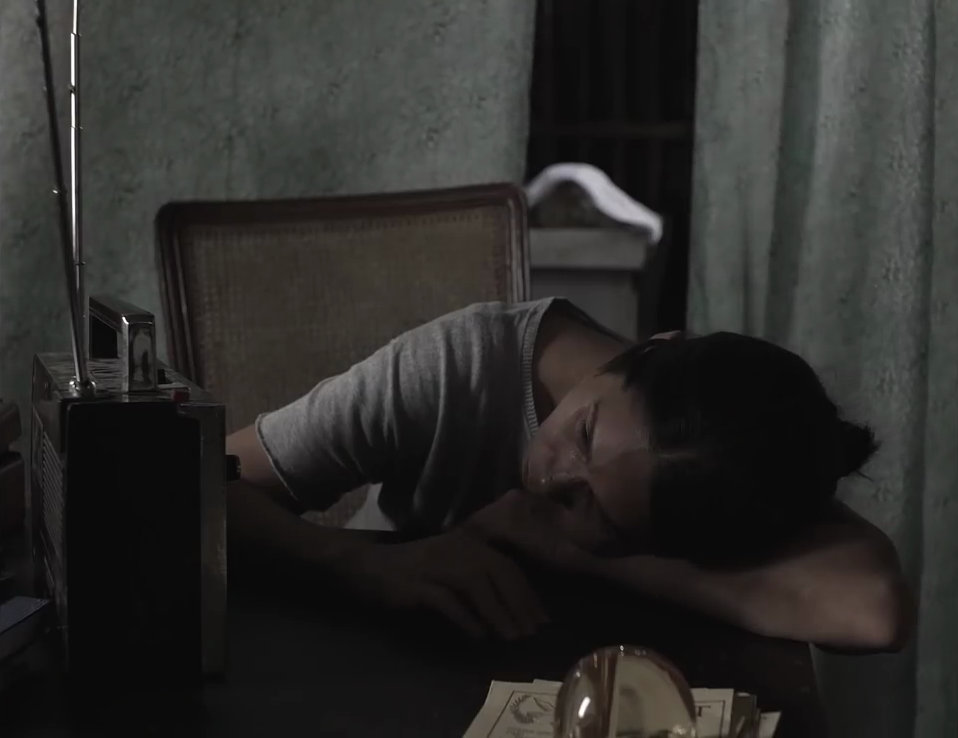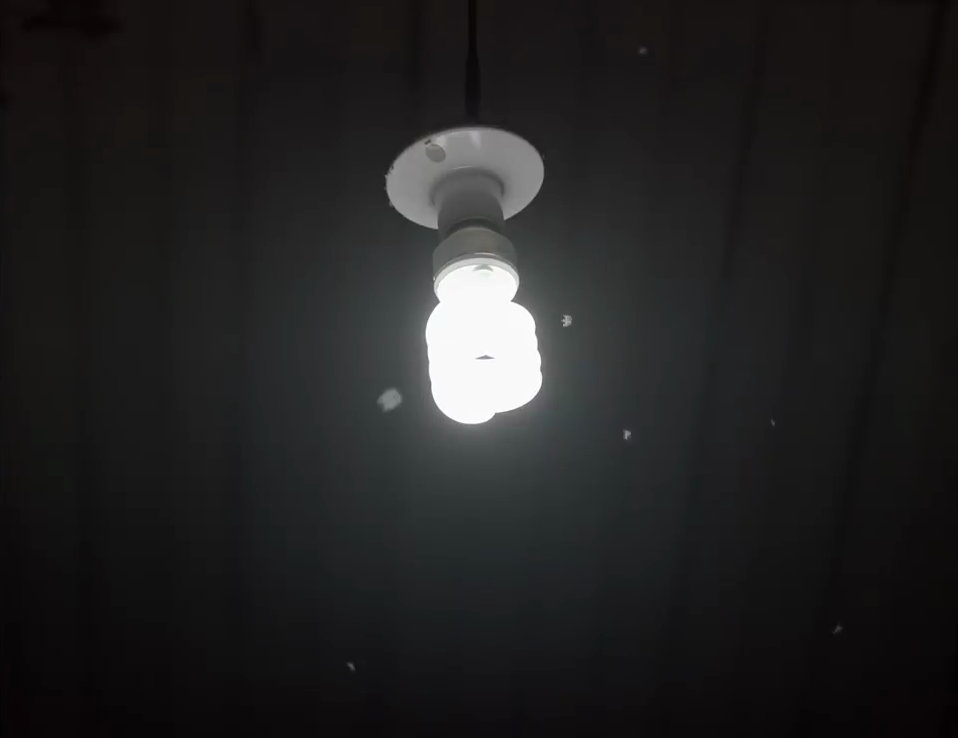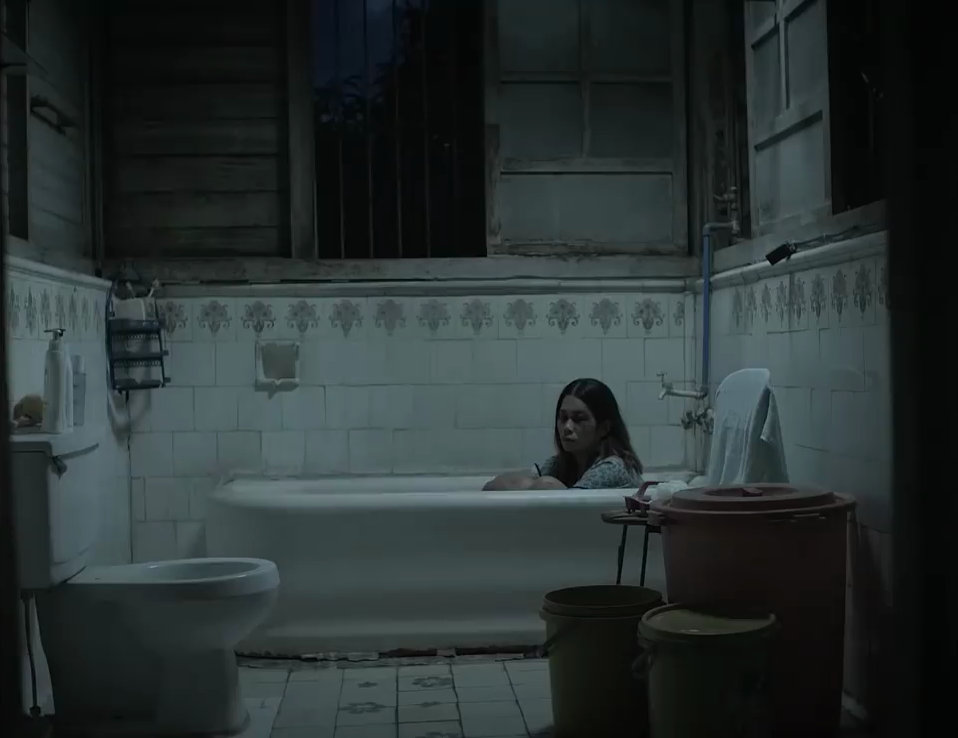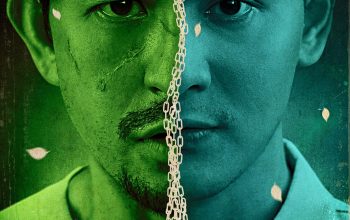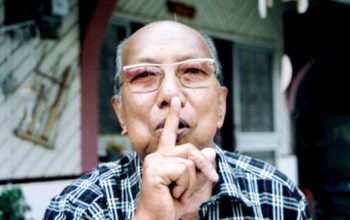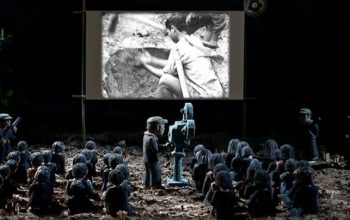Death is an appalling thing. Between the moment of demise and the white nothingness of bones, a corpse suffers a disgusting process of decay, giving off foul odors as it becomes more and more disfigured and discolored. Perhaps it is as a distraction from this reality that funerals have always been accompanied by flowers, which—more than being hopeful symbols of rebirth—are a fragrant and beautiful counterpoint to the hideous transformation of death. It is an ironic distraction, however, because ornamental flowers are also dead things, presently radiant but also doomed to decompose, as even embalmed corpses are.
Oda sa Wala (‘Ode to Nothing’) begins with a familiar Chinese tune playing over an image of a lone white light bulb, attended by a small swarm of flies. As with writer-director Dwein Baltazar’s previous film, Gusto Kita with All My Hypothalamus, this opening combination of image and music is an iconic expression of the film’s themes. (Oda’s opening shot is mirrored in the final scene, like in Hypothalamus, but in a metaphorical way: the light bulb replaced with the moon, the flies with something more troubling.) The Chinese song is Mò Lì Huā, meaning jasmine flower, and like the subject of that song this film is awash with whiteness: an ode to nothing rendered in the color both of purity and of emptiness, an absolute lightness that is as much the color of death as black is.
Oda sa Wala revolves around Sonya, played by Marietta Subong (popularly known as Pokwang) in a career-redefining turn. As an old maid who runs a funeral parlor on her own, she displays a comfortable familiarity with death. Her special occupation sets her apart from others, but not in a good way. She lives a lonely life, spending her days idly looking out the window or tapping fingers on her shop desk, listening to Mò Lì Huā, barely talking with Mang Rudy (Joonee Gamboa), her father and the only other soul in their house. As far as the townspeople are concerned, she comes to existence only when others die. She makes the dead presentable, but when she tries to present herself, she fails to draw the living’s attention. Even when she tries to cast brightness, she entices nothing but decay, misfortune, and evil, like a white light spoiled by insects.
Sonya laments that nobody likes her, because she supposedly smells like rotting flesh (“amoy bangkay daw ako”). When she takes a liking to Elmer (Anthony Falcon), a taho vendor, she makes a desperate move. (That Elmer sells taho ties in with the film’s visual code: an otherwise bland and white substance, meaningfully sweetened and colored with syrup.) She is driven by some sense of mortality, musing that it is only now, as she is growing old, that she has started to consider things she thought she would never do. Her desperate desire to be desired is deeply saddening, in light of the words of Mò Lì Huā; she only wants to be wanted, like jasmine in bloom:
Hǎo yī duǒ měi lì de mò li huā
Fēn fāng měi lì mǎn zhī yā
Yòu xiāng yòu bái rén rén kuā
Ràng wǒ lái jiāng nǐ zhāi xià
Sòng gěi bié rén jiāWhat a beautiful jasmine flower!
Fragrant, beautiful, stems full of buds
Sweet-smelling, so white, loved by everyone
Let me pick you, and give you to someone dear
The film finds intrigue, and a much more provocative focal image, when a corpse arrives at Sonya’s shop one night, under rather questionable circumstances. As the body lies unclaimed in the morgue, business begins to pick up for Sonya, to her great relief because she is struggling to pay a debt to the abusive lender Theodor (Dido de la Paz). She befriends the corpse, speaking to it and appearing to hear it talk back, and she grows fonder of it as her lucky streak continues. One night, she anxiously waits for her father to finish his dinner, while she bites her nails (as she always does when nervous, actually biting off bits, and then spitting out the dead matter); after her father has gone to his room, she goes down to the morgue and comes back up to her own room with the corpse—and the story takes a permanent turn to queasy absurdity. Sonya dresses the corpse with good clothes, and adorns its head with a ring of flowers. It rekindles Sonya’s relationship with her father, as he eventually conspires in adopting the corpse, accepting it like a family member, without fuss.
There are many familiar ironies in Oda: of people making a living out of death, of material satisfaction coming out of others’ spiritual loss, of the dead being more alive than the living and the living being less existent than the dead. Sonya confesses to the corpse that she is afraid of the dark, a contradiction that would have been (darkly) funny if it were not such a sympathetic revelation. Oda is also truly an ode to nothing, in being the delicate kind of narrative that emphasizes elements through their very absence. Much of Sonya and Rudy’s pain and loneliness come from the absence of her mother, and yet this mother is never spoken of in straightforward terms, and the film does not show anything of her more than a passing look at a framed picture. (Although the corpse, of course, is a substitute figure.) Sonya’s present void of an existence leads to questions about her past—How was life before her mother’s death? Has she always been destined for this kind of life, or does her present regret imply a missed chance to lead a different existence?—but all such questions only lead to blanks. Indeed, like the inevitable decay of the corpse, Oda is a story of absolute loss and utter alienation. At the start it finds an already broken character, already spiritually empty, and the film merely proceeds to chart the total deprivation of her life’s material and spiritual remnants. Near the end, Sonya takes a ride in an old, sputtering hearse. It is like her own funeral.
The sparse score and the haunting, bittersweet melody of Mò Lì Huā lay the foundation for an atmosphere of languid dread, but the effect is completed by the deathly stiffness of the cinematography. Neil Daza, the director of photography, shot the entire film with one lens, a rigid 25 mm in 4:3 aspect ratio, and mostly with static perspectives, conserving camera movement for a select few, eerie moments. These choices, along with the subdued, dim grading that transforms the whites into lifeless grays, and the old textures of the ancient house where most of the film is set, pay off in a film that forgoes jump scares in favor of a creeping, more lasting sense of terror.
Death and funerals are staple subjects in Filipino cinema: Marietta Subong’s last movie Sol Searching (released only a month before Oda) in fact also revolves around a delayed funeral, the corpse a passenger in an impromptu road trip. Many of the films utilize the innate terror of death merely as a contrast, to heighten their primary interest in the comedy or drama on the foreground (Die Beautiful, Patay na si Hesus, and very recently, Pang-MMK). Oda sa Wala stands out by going deep into the dark heart of the matter, confronting the audience with the gruesome, taboo, repulsive aspects of death, and using these elements to essay on the loneliness and alienation of a character only seen in passing on the other films—the mortician herself. Other stories mask the darkness, dressing it with upbeat humor and playful absurdity; Oda also has its moments of mirth, but it mostly lays the horror bare, relishing its disgusting figure and irrepressible stench. It takes some courage to watch and contemplate this film, this frightening adventure into darkness, but it also holds the promise of the best kind of serious horror stories: the promise of meaning and hope, upon return to a reality that is suddenly brighter by contrast.
Contrast and contradictions—Jim Libiran, in the poem that lent this film its title, asked, “Kaya mo nga bang lumikha din mula sa wala?,” is creation truly possible from nothing? Oda sa Wala, the film, poses the same question, but is itself quite an answer: an absolutely bleak and hopeless tale of spiritual death, but also a work of rebirth and immortality, as all art are. All films are memorials, even if they vow to be odes to nothing. Like the ironic attraction of flowers, associated with both the joys of life and the miseries of death, Oda emanates a lasting sense of beauty, a gothic, darkly fragrant one.
This article first appeared on Reverse Delay.
